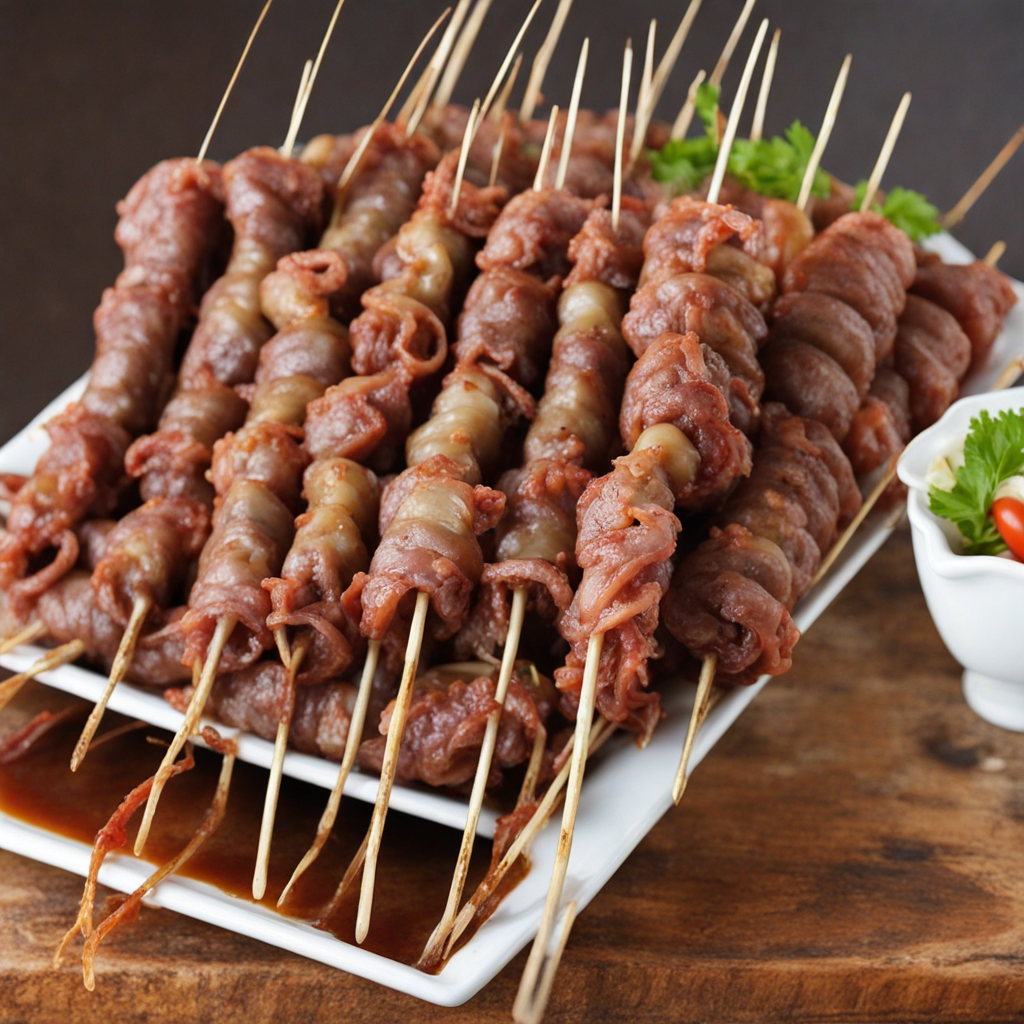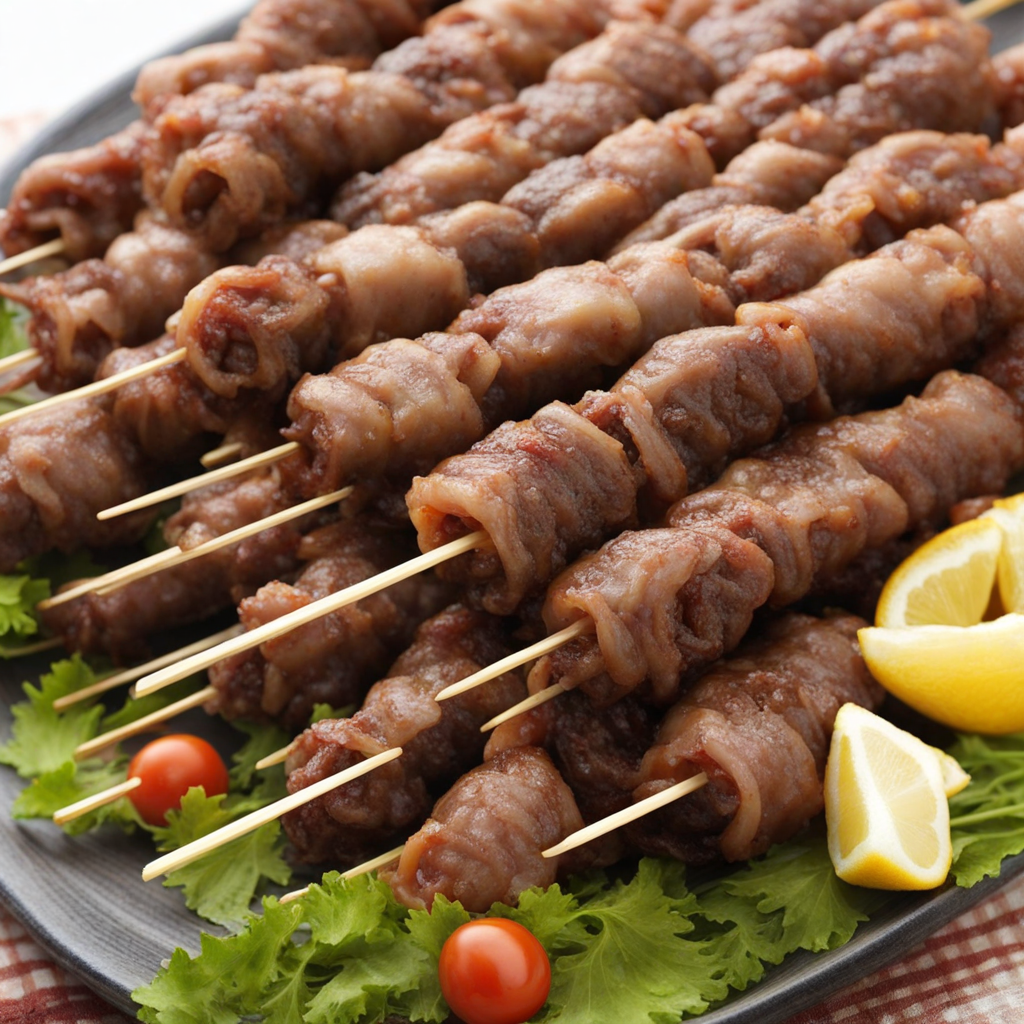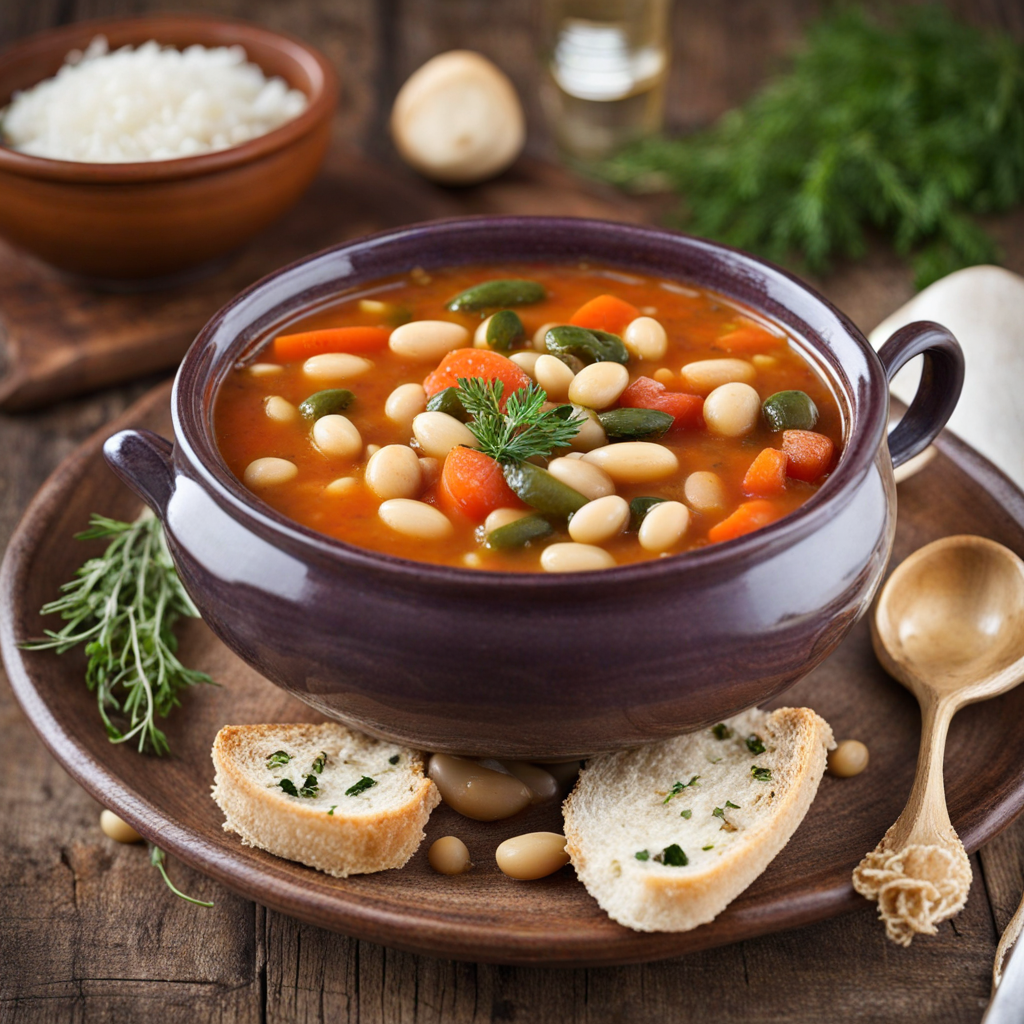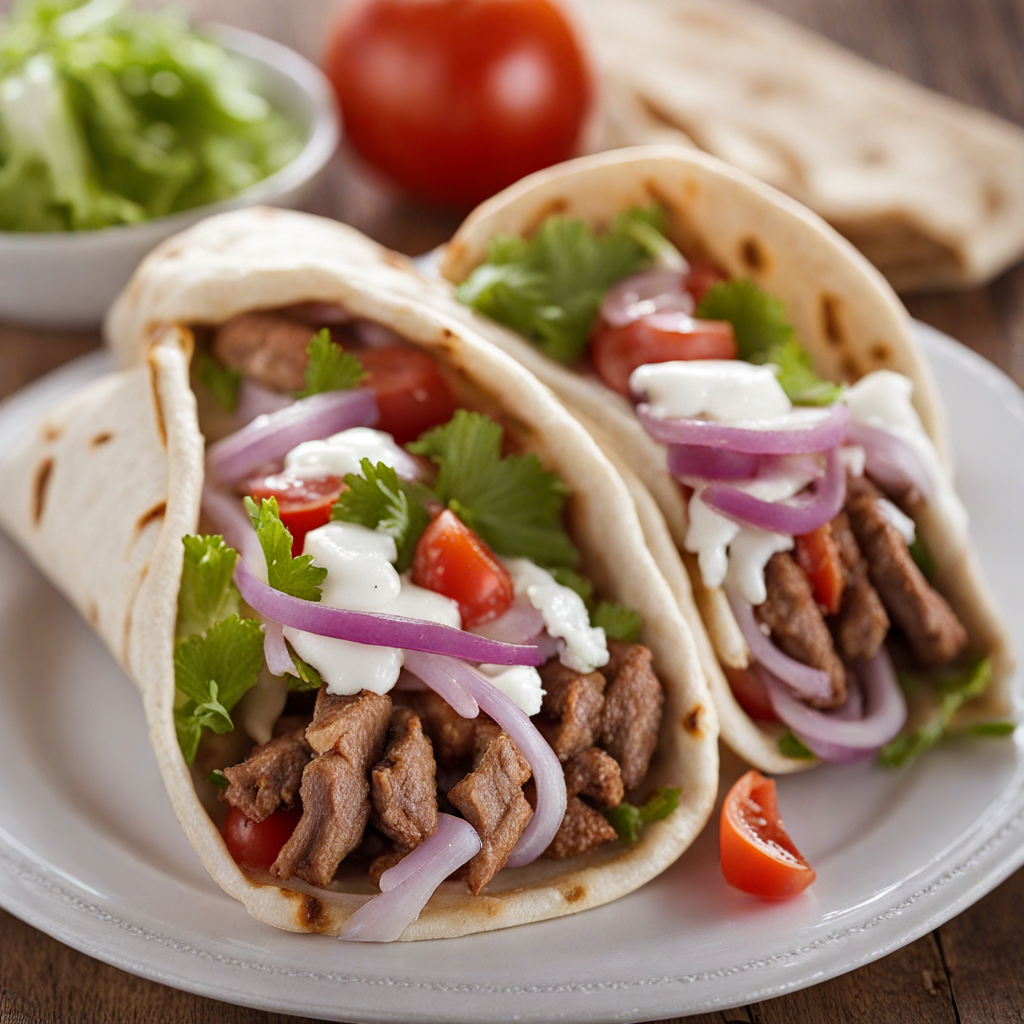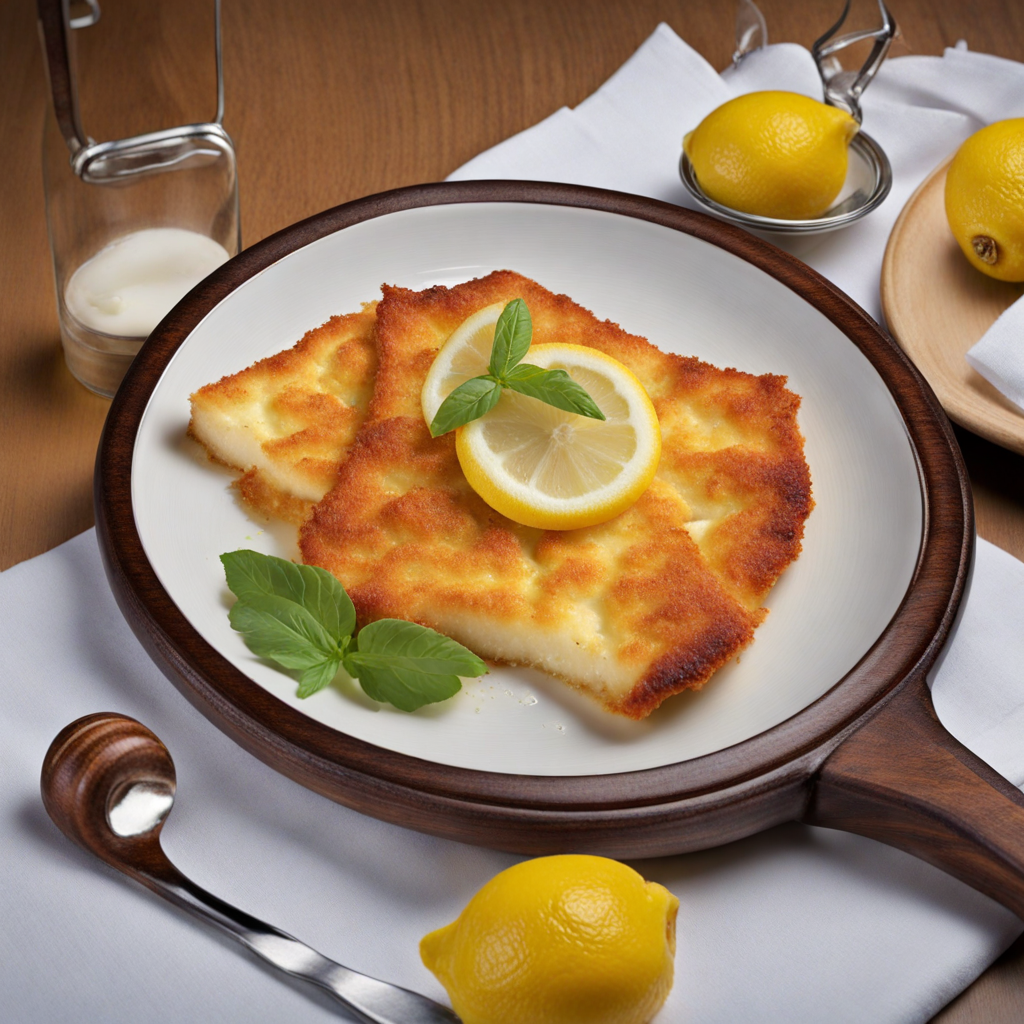Kokoretsi
Kokoretsi is a traditional Greek dish that offers a unique and adventurous culinary experience. At its core, this delicacy consists of lamb or goat intestines stuffed with a flavorful mix of offal, including liver, heart, and lungs, seasoned with a blend of aromatic herbs and spices such as oregano, mint, and pepper. The process of making Kokoretsi requires careful preparation, as the intestines are cleaned and then wrapped around the seasoned filling, creating a savory spiral. This preparation is often grilled over an open flame, resulting in a deliciously crispy exterior that contrasts beautifully with the tender, juicy filling inside. The dish is often served during special occasions and festive gatherings, particularly during Easter celebrations, where it is considered a symbol of abundance and celebration. As it cooks, the fat from the intestines infuses the filling with rich flavors, while the smoke from the grill adds a delightful charred aroma. When served, Kokoretsi is typically sliced into generous pieces, showcasing the intricate layers of meat and herbs, and is often accompanied by a side of fresh bread and tangy sauces, enhancing the overall tasting experience. For those seeking to broaden their palate, Kokoretsi is an exciting dish that embodies the essence of Greek cuisine, with its bold flavors and rustic charm. Its unique combination of textures and tastes—ranging from the crispy outer layer to the tender and aromatic filling—offers a memorable experience for adventurous eaters. Whether enjoyed at a local tavern in Greece or at a festive gathering, Kokoretsi invites food lovers to embrace the traditional and robust flavors of this beloved dish.
How It Became This Dish
The History of Κοκορέτσι: A Culinary Journey Through Greece Food is often a reflection of a culture's past, traditions, and values, and in Greece, few dishes embody this sentiment more than Κοκορέτσι (Kokoretsi). This traditional delicacy, often served during festive occasions, is a rich tapestry of flavors, history, and cultural significance that weaves together the threads of Greek identity. #### Origins of Κοκορέτσι The origins of Κοκορέτσι can be traced back to ancient Greece, where the Greeks had a deep-rooted relationship with their livestock and the resources of the land. The dish is primarily made from the offal of lamb or goat, particularly the intestines, which are cleaned, seasoned, and stuffed with a mixture of organ meats such as liver, heart, and lungs. This practice of utilizing every part of the animal was rooted in necessity and resourcefulness, a reflection of a culture that honored its agricultural heritage. The name "Κοκορέτσι" itself is believed to derive from the Turkish word "kuzu," meaning lamb, and "kebap," which translates to meat or grilled food. This highlights the influence of the Ottoman Empire on Greek culinary practices. The Ottomans introduced various cooking techniques and flavors that merged with indigenous Greek customs to create a distinct gastronomic identity. Over the centuries, Κοκορέτσι evolved into a beloved dish, particularly during the Easter season, when lamb is traditionally consumed to celebrate the resurrection. #### Cultural Significance In Greece, Κοκορέτσι is more than just food; it is a symbol of community, family, and tradition. It is most famously prepared during the Greek Orthodox Easter celebration, where families come together to feast after the Lenten fast. The preparation of Κοκορέτσι is often a communal affair, with family members gathering to clean and prepare the intestines, chop the organ meats, and season them with herbs, spices, and lemon juice. The dish is then skewered and slow-roasted over an open flame, filling the air with an irresistible aroma that beckons neighbors and guests. The ritual of making Κοκορέτσι encapsulates the spirit of togetherness that characterizes Greek festivities. It serves as a reminder of the importance of family bonds and the passage of culinary knowledge from one generation to another. The process itself, from preparation to cooking, fosters camaraderie and a sense of belonging, making it a cherished activity during Easter and other celebrations. #### Development Over Time As Greece underwent significant social and political changes throughout its history, so too did the culinary landscape and the preparation of Κοκορέτσι. The dish remained a staple in rural areas, where traditional practices were upheld, but it also began to adapt to urban environments. In cities, where lifestyles became more fast-paced, the preparation of Κοκορέτσι evolved. While traditional practices continued, new variations emerged, influenced by modern tastes and cooking methods. By the late 20th century, the popularity of Κοκορέτσι began to spread beyond its regional roots. It became a common feature at Greek festivals, tavernas, and restaurants, inviting a broader audience to experience this delicious dish. Street vendors also began to offer Κοκορέτσι as a popular fast food option, showcasing its versatility and appeal to both locals and tourists alike. In contemporary Greek cuisine, Κοκορέτσι has not only maintained its traditional preparation methods but has also embraced innovation. Chefs experiment with different spices, marinades, and cooking techniques, integrating elements from global culinary trends while preserving the essence of the dish. Variations now include the use of different meats, such as pork or chicken, appealing to a wider range of dietary preferences. This evolution reflects the dynamic nature of Greek cuisine, which continuously adapts while maintaining a strong connection to its roots. #### Global Influence and Modern Popularity With the rise of globalization, Greek cuisine has found its way into the hearts and stomachs of food lovers around the world. Greek diaspora communities have played a pivotal role in introducing dishes like Κοκορέτσι to international audiences. Festivals celebrating Greek culture and cuisine often feature Κοκορέτσι as a highlight, allowing people from different backgrounds to experience this rich culinary tradition. Social media and food blogs have further propelled the popularity of Κοκορέτσι outside Greece. Images and videos showcasing the dish's preparation and the communal aspect of enjoying it have captured the attention of food enthusiasts globally, fostering a newfound appreciation for Greek culinary heritage. Cooking classes and food tourism initiatives have also emerged, allowing visitors to Greece to engage with traditional cooking practices and learn to make Κοκορέτσι themselves. #### Conclusion The history of Κοκορέτσι is a testament to the resilience and adaptability of Greek culinary traditions. From its humble origins in ancient Greece to its modern-day interpretations, this dish embodies the spirit of community, celebration, and cultural pride. As it continues to evolve and gain recognition worldwide, Κοκορέτσι remains a cherished dish that unites generations, fosters connections, and preserves the rich tapestry of Greek heritage. In every bite of Κοκορέτσι, one can taste the love, tradition, and history that have been passed down through the ages—a delicious reminder of the enduring power of food to connect us to our past and to each other.
You may like
Discover local flavors from Greece


